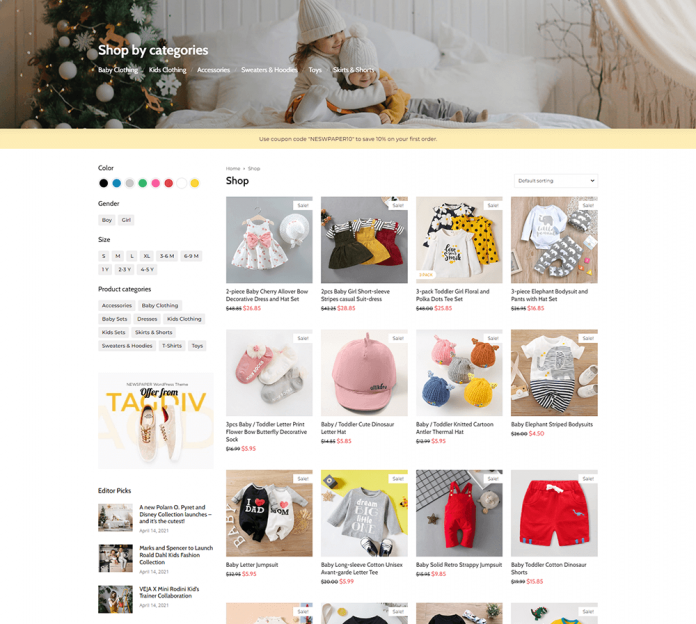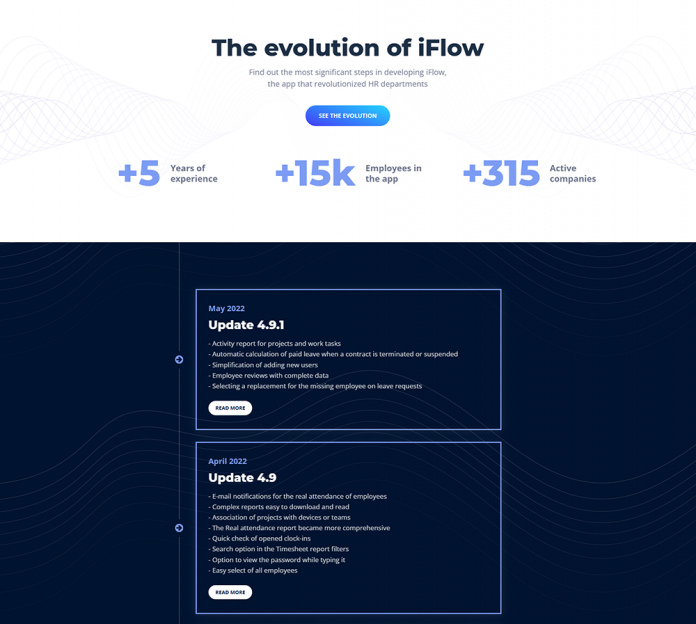Keywords for SEO, also known as SEO keywords, are the words or phrases that people use to get results on search engines, such as “how to tie a tie.” Including SEO keywords in online content can help enhance relevancy, search ranks, and organic traffic.
What exactly are keywords?
The fundamental purpose of SEO is to score high in search engine results for the keywords and phrases that your potential clients are looking for. Keywords are words and phrases.
What is the significance of keywords?
Many things influence your site’s potential to rank effectively, but keywords assist search engines in understanding what each page on your site is about.
Keywords assist search engines in displaying the relevant sites for specific searches and ensuring that they are giving their users the information they want.
This means that one of the primary aims of SEO is to find the keywords that your potential customers use when looking for your products or services, then to create content that answers the search intent behind those keywords and use those keywords in the appropriate sections of your site.
Know more about: Page Title SEO, Keyword Density, Technical SEO, Google Penalties
What are SEO keywords?
Keywords for SEO are words or phrases that are used in your web content to help visitors locate your website through search engines such as Google. Optimizing your website with SEO keywords (and SEO best practices) might help you attract more users and traffic.
What are the different sorts of SEO keywords?
There are two types of SEO keywords to be aware of short-tail and long-tail.
1. Short-tail Keyword
Short tail keywords are those that contain only one or two words.
For example, in the graph on the right, “dog” is a short tail term.
These keywords have a high search volume, which means that many people look for them each month. This may appear to be a beneficial thing if you’re trying to choose keywords for your website. After all, you want your company to be seen by as many people as possible, right?
Unfortunately, short tail keywords have extremely high competition, making it difficult to rank effectively for them. This is especially true if you are just getting started with a website that will compete with companies that have been optimizing their sites for years.
As a result, short-tail keywords aren’t a recommended term for SEO, at least for organizations just starting. In comparison, a corporation that has been using SEO for years may target short-tail keywords without fear.
2. Long-tail keywords
Long-tail keywords, on the other hand, can include three to ten words, and occasionally even more. In the same vein, a long-tail keyword might be “best breed of guard dog for families with children.”
These keywords have a lower search volume but far less competition. This implies that, even though fewer individuals search for them each month, you have a considerably better chance of contacting them.
Furthermore, long-tail keywords have a much clearer intent than short-tail keywords.
For example, if you were trying to rank for the term “dog,” it would be very impossible to identify what information your visitors were seeking and deliver it. However, if you wanted to attract people who were looking for the “best breed of guard dog for families with children,” you’d know just what to cover on that page.
How to Choose SEO Keywords That Drive Traffic
You’re probably wondering how to choose SEO keywords now that you know what they are. Fortunately, there are numerous tools available to assist you in finding the finest keywords for SEO, as well as tried-and-true methods.
1. Make use of keyword research tools.
Keyword selection should never be based on guessing, and there are numerous internet tools available to help you find the finest possible possibilities for your organization.
If you conduct pay-per-click (PPC) campaigns using Google Ads, one of the finest alternatives is Google’s Keyword Planner, which gets data directly from Google Ads. It provides precise statistics on the search volume and level of competition for each keyword.
It also proposes keywords based on the material existing on your site, which is a good place to start when researching keywords.
If you don’t have an active Google Ads campaign, or if you simply wish to go beyond Google, there are various keyword research tools to consider. While some are costly, there are free solutions for finding SEO keywords.
Here are a few examples of free tools:
- KeywordsFX
- Keyword Tool
- Answer the Public
To find the ideal SEO keywords for your website, feel free to use a mix of these tools.
2. Concentrate on long-tail keywords
Long-tail keywords should be prioritized as you identify potential keywords for your site.
Although you may use a few shorter keywords (particularly branded keywords such as your company’s name) for your homepage and other company-specific pages, identifying long-tail keywords should be your major focus.
Using the same example as before, putting “dog” and “best breed of guard dog” into Term Planner reveals that, while “dog” is searched over 1.2 million times per month, ranking for that keyword would be challenging.
“Best guard dog breed,” on the other hand, is only searched 40 times per month, but competition is low. This suggests that targeting this term would be an excellent idea if your company was an animal shelter, pet store, or provided pet care supplies.
After all, 40 searches per month may seem insignificant, but that’s 480 searches per year from people who could become your customers.
Check out our page on identifying long-tail keywords for more information on how to identify these very specialized phrases.
3. Look for keywords with a large volume yet a low level of competition.
Although long-tail keywords typically have a low rivalry, you should still examine the volume and competition of each when conducting your study.
Certain industries are more competitive than others, and ranking for long-tail keywords might be difficult. This is especially true if your organization operates in the legal, insurance, drug and alcohol rehabilitation, or online education sectors.
Regardless of your industry, it’s critical to consider how difficult it will be to rank for any specific keyword. If you have little chance of ranking for a given phrase, optimizing a page for it is a waste of time.
Instead, concentrate your study on keywords that have a good chance of ranking and driving traffic to your site. If you’re new to keyword research, this post on selecting quality keywords is a great place to start.
7 tools for quickly identifying SEO keywords
When it comes to selecting keywords for SEO, the following keyword tools make it a breeze:
- KeywordsFX
- Keyword Tool
- Answer the Public
- WordStream Keyword Research Tool
- Ahrefs
- SEMrush
- Moz Keyword Explorer
Experiment with these several tools to see which one gives the greatest experience for your team. In most circumstances, you’ll need more than one. You may, for example, utilize Answer the Public for topic and content research, followed by Ahrefs for keyword research or reducing your list.
How to Incorporate SEO Keywords into Your Website
You must use your keywords throughout your site once you’ve chosen them. As a general guideline, one keyword per page is best. This makes it easy for search engine crawlers to identify the main subject or topic of any given page and return it as a result for relevant searches.
Begin implementing SEO keywords on your website by including them in the following areas:
Your website addresses
To begin, make certain that all of your URLs are SEO-friendly. If they aren’t, restructure your URL structure, include relevant keywords in your new URLs, and set up 301 redirects for any old sites that need to be changed.
Meta tags
Then, like your title and heading tags, incorporate keywords in your meta tags.
Each title tag should be precisely what it says: a page title.
Heading tags are subheadings that separate parts or concepts on a page. These not only tell search engines what your website is about, but they also allow users to quickly find the information they need.
Your content
Then, go through each page and make sure the target keyword appears naturally a few times. Term stuffing occurs when you insert your keyword in locations that are irrelevant or make no sense.
Keyword stuffing violates all major search engine criteria and results in a penalty that prevents your site from appearing in search results. Furthermore, keyword-stuffed websites may not always make sense or provide value to your readers.
Instead, utilize the term for each page just where it makes sense; if it makes no sense anyplace, it isn’t the proper keyword for that page. Try to use your SEO term in your first paragraph for the greatest results.
Your images
Search engines can “read” your photographs even if they cannot “see” them.
That is why you should optimize your photos for the SEO keyword. You can include your keyword in both the filename and the alt text of your image. Make sure your keyword is natural and makes sense in your alt text.
Your alt text should describe your image.
For example, an image of a puppy in a pool could have alt text such as “puppy in the pool.” Stuffing or forcing your keyword into your alt text can undermine your SEO efforts, resulting in worse rankings, less traffic, and fewer sales from site visitors.
How to Make the Most of SEO Keywords for Content Marketing
As you explore keywords connected to your industry, products, and services, you’ll come across several that highlight specific themes that your target audience wants to learn more about but aren’t covered in your site’s existing pages.
These are incredibly significant keywords for your content marketing approach. If you’re unfamiliar with content marketing, it entails generating and publishing unique blog posts, article pages, infographics, videos, and other content that informs or entertains your target audience.
It’s common to think of us as a different approach from SEO, but when you utilize the keywords discovered during keyword research to guide your topic selection, you can be confident that you’re providing content that your potential consumers want.
Then you may optimize your content to rank for the keywords you use.
This method is particularly beneficial for long-tail keywords. After all, if someone is seeking a specific term, they probably know exactly what they’re looking for. And you must offer that information if you want to keep them on your site.
When you generate unique content that answers potential consumers’ inquiries or solves a specific problem, you drive traffic to your site and increase brand awareness among those who come. Their first impression of your firm will be positive as long as the stuff you provide is truly helpful.
Even if these visitors aren’t ready to buy or contact you on their first visit to your site, they’ll remember your brand for when they are, which means the content you generate can have a direct impact on your sales and revenue.
Do you require assistance with SEO keywords?
We have years of expertise developing successful SEO strategies for our clients at WebFX. An important aspect of the procedure is researching and picking effective SEO keywords for each of them.
When you work with us, we’ll get to know your company and industry inside and out, and we’ll conduct all of the necessary research to determine what your potential customers want. To move your plan forward, our skilled team will optimize your site for the finest potential keywords and develop original content.
You May also like sitescorechecker, Pro Site Ranker



![keywords for seo [seokeyword]](https://www.krishnabogati.com.np/wp-content/uploads/2022/07/keyword-for-seo-seokeyword-1.png)





